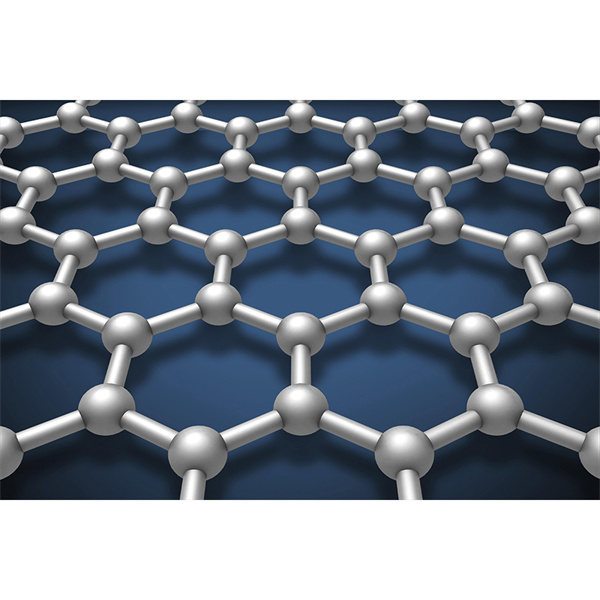Email: info@karssenmetal.com Tel: +86 18147353336

Graphene is a general term for two-dimensional carbon materials. According to the number of layers of the hexagonal honeycomb structure, graphene can be divided into single-layer graphene, double-layer graphene, few-layer graphene (3-10 layers), and multi-layer or thick-layer graphene (thickness of more than 10 layers, less than 10 nm). With a thickness of 0.35 nm, single-layer graphene is the thinnest known material. The structure of graphene has to start with the graphite structure. Graphite is a molecular crystal combined by van der Waals forces and has a three-dimensional layered structure. Because the carbon-carbon bonds on the same plane layer are very strong and extremely difficult to break, graphite has a high melting point, stable chemical properties, and excellent properties in mechanics, electricity, optics, and heat.
1. Mechanical properties
In graphene, the connection between carbon atoms is in a very flexible state. When an external mechanical force is applied, the carbon atomic face will bend and deform, and the carbon atoms do not have to be rearranged to adapt to the external force, thus maintaining the structural stability. Graphene is the strongest material known to man, more than 100 times stronger than the strongest steel in the world.
2. Electrical characteristics
Graphene has ultra-high electron mobility, and its conductivity is much higher than any current high-temperature superconducting material. The University of Manchester team measured the electron mobility of single-layer graphene molecules at room temperature and found that even in graphene containing impurities, the mobility of charges can reach 10,000 m2/(V.s). In 2008, Heim's research group also proved that the mobility of electrons in graphene can reach an unprecedented 200,000 m2/(V.s). Soon after, K. Bolotin of Columbia University raised this value again to 250,000 m2/(V.s). Moreover, the electron mobility of single-crystal silicon, the main material of the former transistor, is only 1400 m2/(V.s), and the electron mobility of high-purity graphene is more than 150 times higher than that of single-crystal silicon. In addition, the electron mobility of graphene hardly changes with temperature.
3. Optical properties
Graphene is almost completely transparent, absorbing only about 2.3% of visible light, with a light transmittance of up to 97.7%. The light absorption of graphene layers is proportional to the number of layers. Each layer in the FLG sample can be regarded as a two-dimensional electron gas, and the perturbation of the monitored layer is very small, which is optically equivalent to Superposition of barely interacting single-layer graphene (SLG). The absorption spectrum of single-layer graphene is flat between 300 and 2500 nm, and there is an absorption peak in the ultraviolet region, which is due to the van Hoof singularity of exciton movement in the graphene density of states. In multilayer graphene, the low-energy region has other absorption properties associated with interband transitions.
4. Thermal properties
Graphene is also a thermally stable material. The thermal conductivity of graphene is as high as 5300 W/(m.K), which is 13 times that of copper. The study found that the thermal conductivity of single-layer graphene is closely related to the sheet broadband, defect density and edge roughness; The thermal conductivity in the plane direction has the characteristics of anisotropy; Above room temperature, the thermal conductivity of graphene gradually decreases with the increase of temperature.
5. Chemical Properties
The electrical properties of graphene have received extensive attention, but its chemical properties have been poorly understood. The known chemical properties are: graphene can adsorb and desorb various atoms and molecules, such as nitrogen dioxide, ammonia, potassium and other adsorbates as donors or acceptors often lead to changes in carrier concentration; And adsorbates such as hydrogen ions, hydroxide ions, etc. produce poorly conductive derivatives, but these are not new compounds. From the point of view of surface chemistry, the properties of graphene are similar to graphite, so the chemical properties of graphene can be inferred from graphite. The study of the chemical properties of graphene will become a research hotspot in the next few years.
Isostatic graphite blocks are an important graph
Graphite rotor belongs to graphite material, whi
Graphite sheets have many important roles in the
Contact: Bateer
Phone: +86 18147353336
Tel: +86 18147353336
Email: info@karssenmetal.com
Add: Room D204-2203, Innovation Building, Baotou Light Industry Vocational Technical College, 19 Jianhua Road, Qingshan District, Baotou City, Inner Mongolia, China.